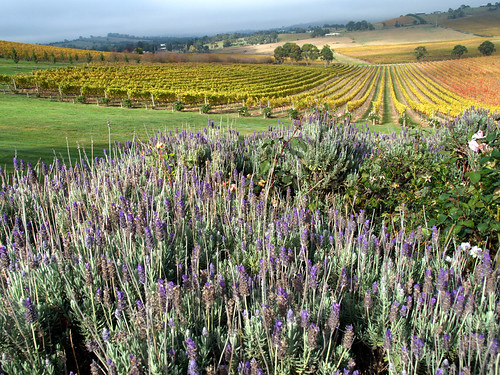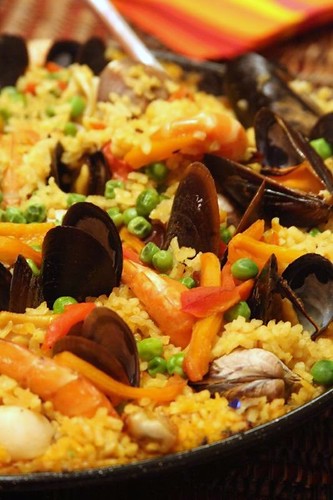 |
| (Image via clodius_maximus' flickr) |
Yesterday I was yammering on about a great Right Bank wine, only to have my friend say, "The right bank of what?" Hmmm, I guess my inner wine geek was showing a little too much here.
So here's the 411. Left Bank and Right Bank refer to two separate regions of Bordeaux in France. They are each located on two separate rivers (the Garonne and the Dordogne) which meet and create the Gironde Estuary. These geological features are important because they create very different growing areas and therefore, they create very different wines. There's a great map here.
Both regions favor growing a mix of different grapes to combat climatic variations. This acts like an insurance policy against things like hail or rain. By planting different grapes and creating a blend each year, the winemaker can be assured that he will have something good to offer the buying public year after year. So if the weather conditions render the Cabernet Sauvignon crop less than spectacular, there will be four other grape crops that can be used to fill the void. Those four other grape varietals are Merlot (giving the wine a nice softness and great color), Cabernet Franc (offering great aromatics), Petit Verdot (a contributor of color and structure) and Malbec (adding tannin and color).
First, the Left Bank. This region is famous for gravely soils that are heat retaining and well drained. These soils favor the Cabernet Sauvignon, which needs heat to ripen. It doesn't do well in the Right Bank because it has difficulty ripening in the region's cooler soils. The majority of the left bank wines will have a blend dominated by Cabernet Sauvignon. The best assurance of good wine from the Left Bank is to buy from one of the better regions and to be prepared to spend a little more. Look for Paulliac Margaux (the region, not the famously priced Chateau), and St. Julien.
Second, the Right Bank. As I've alluded to above, the soils of this region are very different. The are more moisture retaining clay, which Merlot does very, very well in. This region, too, creates blended wines but Merlot will be the dominant grape. Interesting, though that the most expensive wines in the world can come from this region, even though the Merlot grape has been much maligned in recent years. Petrus and Cheval Blanc are two Chateaus that are much celebrated Merlot blends. And here's a bit of ironic trivia for you. In the movie Sideways, Miles loudly proclaims, "I'm not drinking any f*@$ing Merlot!" However, his treasure wine that he's been saving for a special occasion is a 1961 Cheval Blanc. Yep, a Merlot. If you're going looking for a Right Bank wine, try something from Pomerol or St. Emilion.
Finally, a word about pricing. Be prepared to spend $30 to $40 for one of these wines. Bordeaux is typically overpriced (in my opinion). There are cheaper options out there, but frankly, they are not very reliable and relatively poorly made. If you're looking for a big red in a lower price point, you are better off buying something from California, Washington State, Australia or South America.
Cheers,
Sandy







